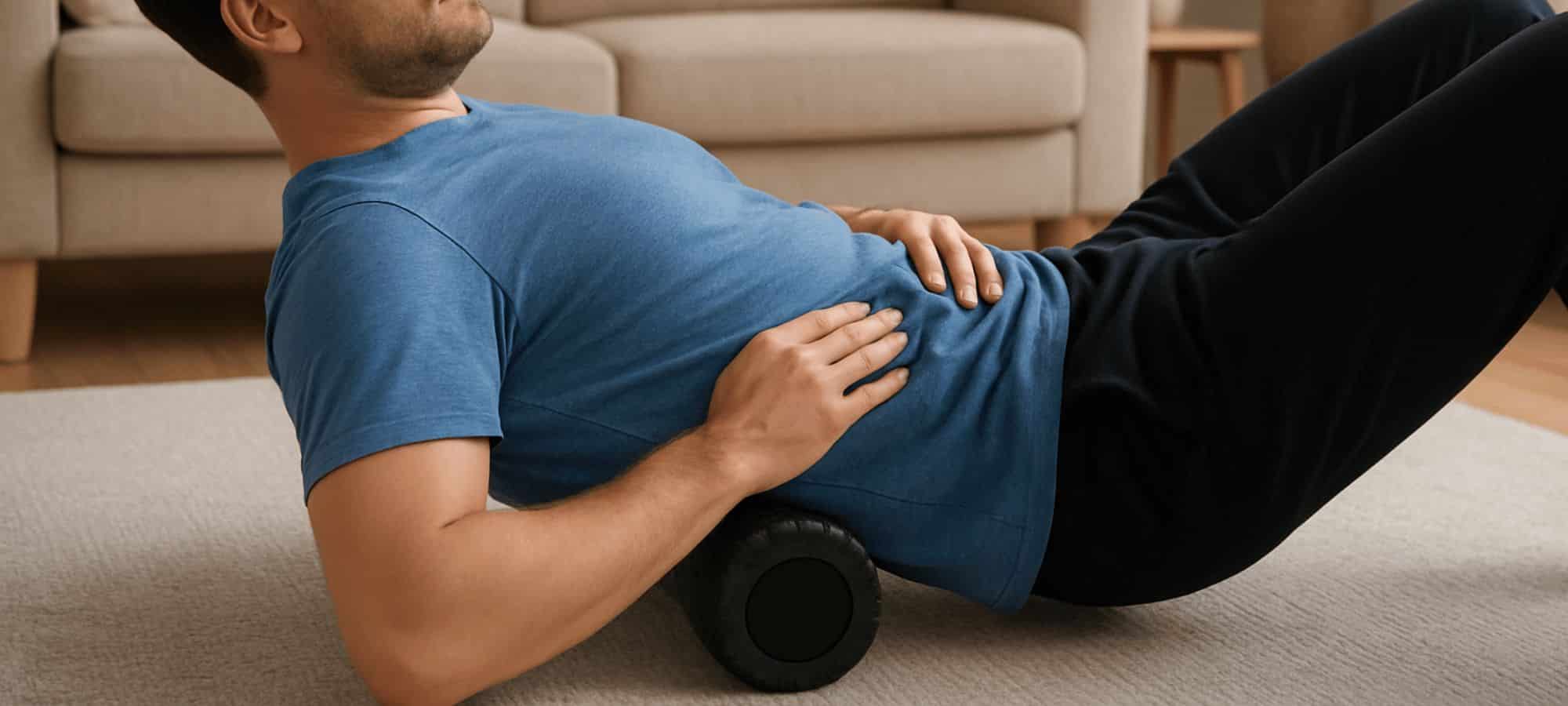Understanding How Manual Therapy Helps Your Back
Back pain, whether it’s acute low back pain, chronic low back pain, or non-specific low back pain, is one of the most common causes of disability worldwide. Many people assume that manual therapies must be performed only by a clinician such as a physical therapist. While some manual therapy techniques require professional skill, several manual therapies you can do on your own may help reduce pain and improve mobility.
1. Self-Myofascial Release (SMR) With a Foam Roller or Ball
Self-myofascial release is a form of manual therapy commonly used for musculoskeletal pain and known as myofascial pain patterns.
Why It Helps:
Self-applied pressure can reduce pain, decrease muscle tone, and improve spinal mobility.
How to Do It:
– Place a ball or roller under your lower back or hips.
– Gently shift your weight to find a tender area.
– Hold 20–30 seconds and breathe.
2. Lumbar Self-Mobilization With a Towel Roll
A gentle self-version of lumbar mobilization.
Why It Helps:
Gentle pressure can improve movement and reduce discomfort.
How to Do It:
– Roll a towel and place it under your lower back.
– Rock your knees side to side or shift your pelvis.
3. Self-Massage Therapy for Paraspinal Muscles
Useful for acute and chronic low back discomfort.
Why It Helps:
Massage increases circulation and reduces muscle guarding.
How to Do It:
– Use your hands or a massage tool.
– Apply gentle pressure along the muscles beside the spine.
4. Self-Applied Trigger Point Therapy
Helpful for chronic musculoskeletal pain and chronic lower back pain.
How to Do It:
– Use a tennis or lacrosse ball.
– Press into tender knots for 15–45 seconds.
5. Self-Mobilizing Hip Flexor Release
Tight hip flexors can contribute to lower back pain.
How to Do It:
– Kneel on one knee.
– Lean forward until a stretch is felt.
– Add gentle pressure to the front of the hip.
Key Takeaways
- Several manual therapy techniques for back pain can be safely done at home and may help reduce pain and improve function, especially for patients with chronic low back pain.
- Techniques such as self-myofascial release, trigger-point pressure, and gentle mobilization often provide short-term relief from back pain and can support long-term recovery when combined with exercise.
- These self-techniques complement (but do not replace) care from a physical therapist as part of a complete treatment plan for treating back and neck pain.
- Consistent use may improve mobility, reduce stiffness, and help manage chronic musculoskeletal pain.
- If pain worsens, spreads, or involves more than muscle discomfort, professional evaluation is recommended.
FAQ
- Are these techniques safe for everyone?
Most people with nonspecific low back pain can use them, but red-flag symptoms require professional evaluation. - How often should I do these techniques?
Daily or near-daily use is common. - Will these techniques cure chronic pain?
They can reduce pain, but long-term improvement usually requires combining them with exercise and education. - What if my pain returns?
Pain often returns without strengthening and movement retraining. - When should I see a physical therapist?
If pain persists, worsens, or affects strength or sensation.
At South Island Physiotherapy, we know that every body is unique. Whether you’re seeking quick relief, long-term rehabilitation, or a balance of both, our team is here to guide you toward the care that best fits your needs. If you’re ready to understand the cause of your back pain and find a plan that works for you, book a consultation today. Together, we’ll design a personalized treatment strategy that supports lasting strength, mobility, and relief.

